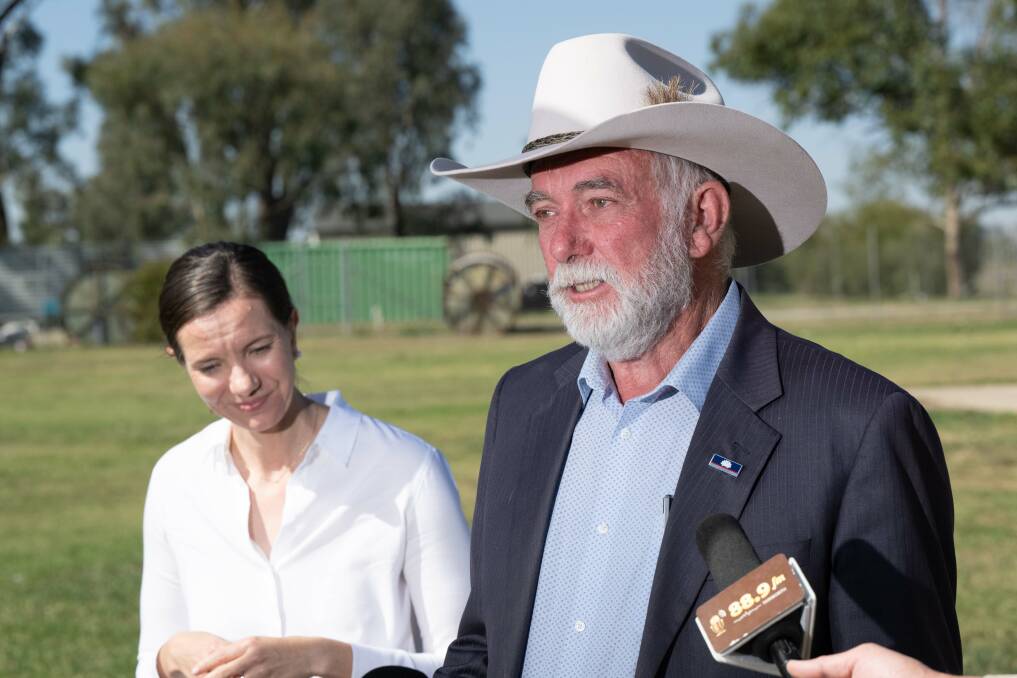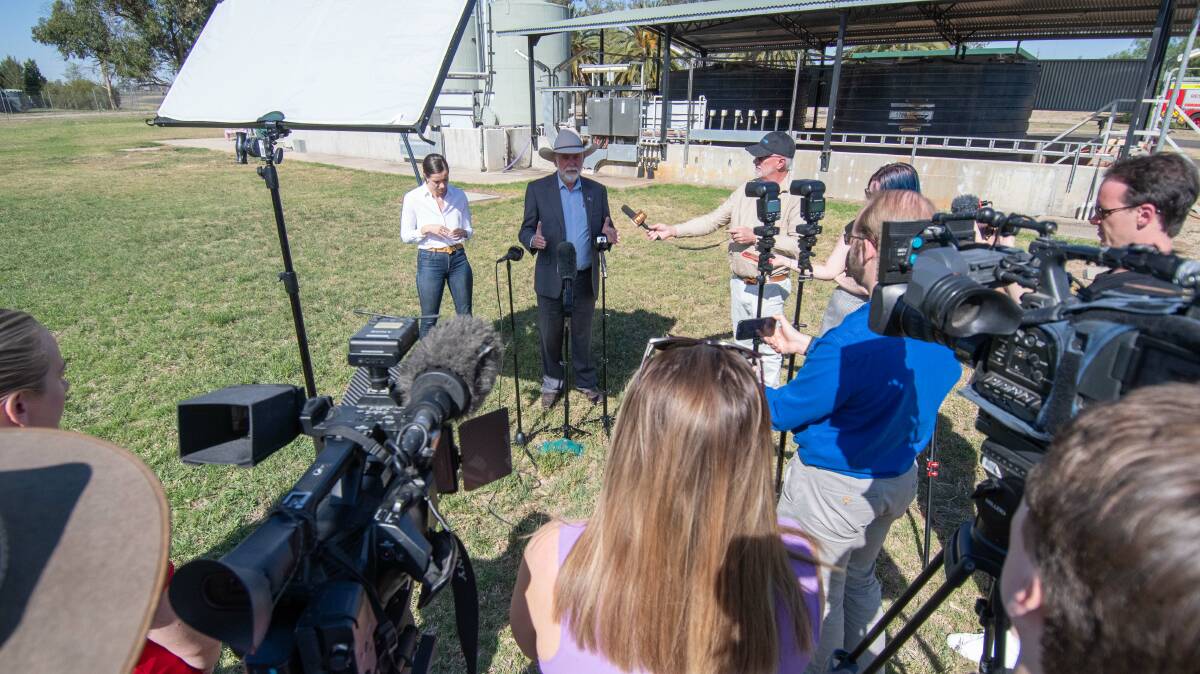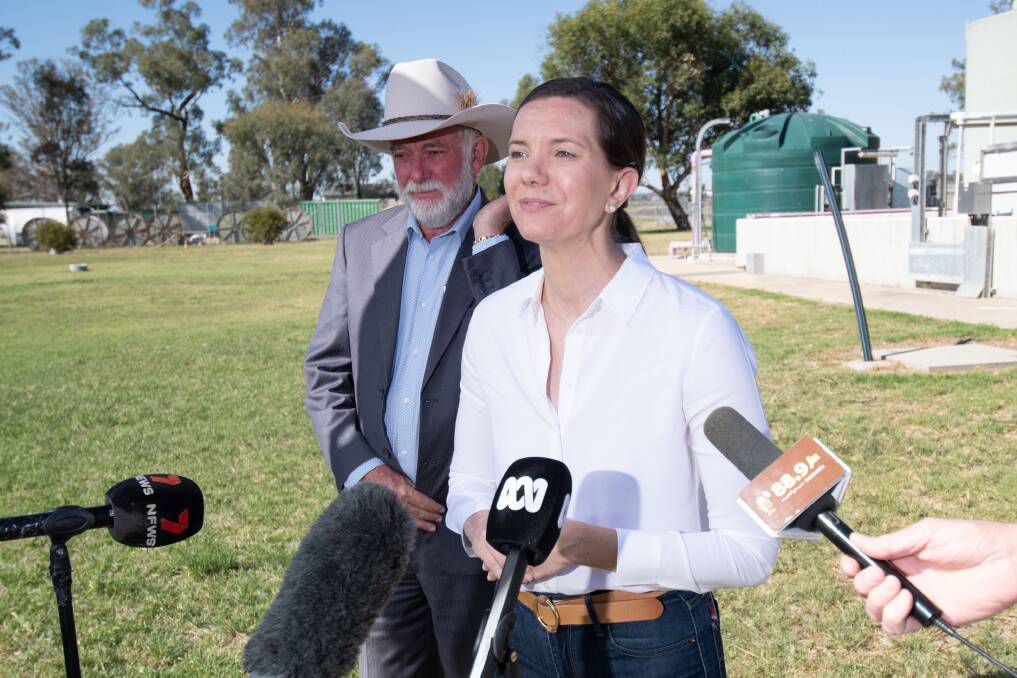Plans for an industrial water recycling plant to boost Tamworth's water security have taken a huge step forward, but the project's future still isn't set in stone as the city prepares for the next drought.
Subscribe now for unlimited access.
or signup to continue reading
The Federal and NSW Governments have announced a $6 million joint investment to investigate and put together the final business case for the state's first regional industrial advanced water treatment plant.
"It's good to hear the announcement of $6 million for something we've been working on so hard for so long," Tamworth mayor Russell Webb said at the announcement.
"It's so great to have minister Jackson supporting us in what we're doing, being so supportive, and pushing the project along. It's good to have the government working with us because if the government doesn't work with us, these things don't happen, and it's critical to get this happening now."

NSW water minister Rose Jackson said she's "confident" the plant will eventually begin construction, but at this time there isn't money in the budget to actually build the facility once the 18-to-24-month planning phase is completed.
She said over-promising on projects that "were never realistic" is what got the previous government's Dungowan Dam 2.0 project scrapped following a $1 billion cost blowout.
"That Dungowan Dam example is exactly the reason why we're doing it this way, because you can't announce projects that end up with a price tag a billion dollars over what you initially flagged. That's poor governance, poor public policy, and it really sells communities short," Ms Jackson said.
"We're really confident that this project is going to stack up, but we're doing the work to make sure that's the case."
READ ALSO:
If all goes well, the proposed water recycling plant will take Tamworth's four large food processors off the town's water supply, saving between 25 and 40 per cent of its potable water, which could then be re-allocated for residential use.
The project has the support of Federal water minister Tanya Plibersek, who said in a statement that being able to do more with a limited water supply is "vital" for supporting the region's growth.
"We need to look at how we can reduce the pressure on the system while supporting increasing demand. This project is an innovative way we can achieve this, and one where we have listened to the local council, just as I said we would at the Bush Summit earlier this year," Ms Plibersek said.
"It could see the equivalent of almost five Olympic swimming pools of water recycled every day."

Tamworth's four big food processors use an estimated 10 to 12 megalitres of water per day, and the mayor said every drop of that water will count as the city prepares for the next major drought.
"The dams might be full at the moment, but in 2016 the dams were full, and only a few years later we got very, very close to running out of water," Cr Webb said.
"That 10 to 12 megalitres per day we'll pick up out of this purification plant will make one big difference to our water security."
The mayor also said council is working closely with the state government on a raft of other water security measures as it rolls out its new Namoi Regional Water Strategy.
This includes potential changes to the Peel Valley Water Sharing Plan, which the NSW government uses to balance the interests of water users in the state, and has been a bone of contention between Tamworth council and the local irrigation industry for years.
The state water minister said she "will not hesitate to make changes [to the plan] that are needed to protect critical human needs," but that it's also important not to rock the boat too suddenly.
"When you're gonna change those rules, I do think it's really important to do that in a fair way and give people a good signal about where there might be changes, so I'm not going to rush changes to water sharing plans. I don't think that's fair on water users," Ms Jackson said.
"Part of what I'm trying to do with comments to the media is signal to people that they should be aware that if we keep seeing dry conditions, if we move into a full-blown drought, there will be changes to those rules and people should keep that in mind."

In addition, the water minister also announced a separate state government initiative to investigate the potential for building inter-valley pipelines and off-river storage that would link Tamworth to water from Keepit Dam, Split Rock Dam and the Manning Valley.
The NSW government will spend $3 million over the next two years to investigate the costs and benefits of potentially building hundreds of kilometres of pipes to improve on existing infrastructure.
"In the short term we're looking at things like rules-based mechanisms, what we can do to the water sharing plan, and piloting some really innovative water savings processes to make personal use as low as possible," Ms Jackson said.
"In the medium term we're exploring options like pipelines, whether it's through Keepit or Split Rock dam or into the Manning Valley, and in the long term we're making investments like the advanced water treatment facility. Unless we keep planning for the medium and long term, we'll never get the kind of water security and resilience we need."
Our journalists work hard to provide local, up-to-date news to the community. This is how you can continue to access our trusted content:
- Bookmark northerndailyleader.com.au
- Make sure you are signed up for our breaking and regular headlines newsletters
- Follow us on Twitter
- Follow us on Instagram
- Follow us on Google News


